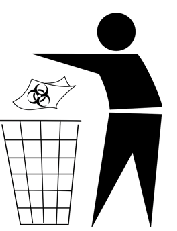Alice Herman
hermanal17@grinnell.edu
After years of existing as a “brownfield,” a plot of land in western Grinnell is poised for redevelopment. Brownfields are, according to the Environmental Protection Agency (EPA), “abandoned, idled or underused industrial and commercial facilities where expansion or redevelopment is complicated by real or perceived environmental contamination.”
The Iowa Department of Natural Resources (DNR) and Kansas State University’s Technical Assistance to Brownfields program (TAB) brought the issue of Iowa’s brownfields—and Grinnell’s brownfield—to the table at a statewide workshop on brownfield redevelopment this past Tuesday at Drake Community Library in Grinnell. Included on the agenda was an informational presentation about brownfield development by Margaret Renas. Renas highlighted “marketability” as a vendor’s main obstacle from developing a brownfield.
“Ease of development is determined by the land characteristics, culture of the surrounding community, redevelopment incentives and environmental conditions,” Renas said at the workshop.
Grinnell’s brownfield has faced environmental challenges to redevelopment since its contamination in the 1990s by Miracle Recreation Equipment Company, a playground manufacturing company which reportedly produced life-like replicas of Ronald McDonald as well as conventional playground equipment. The land was later bought by RC Industries and subsequently tested for groundwater and soil contaminants.
The EPA conducted a series of tests on the land, reporting that soil samples on the property revealed wastes including Volatile Organic Compounds (VOCs), benzene, toluene, ethylbenzene, xylenes and acetone, earning the site a place on the Iowa DNR’s registry of hazardous waste disposal sites. In the ten years following the discovery of contaminants, the DNR removed 119 drums of waste and 360 cubic yards of soil. The waste removal was completed by 1991, and the area has tested clean in the past three years.
Mel Pins, Program Coordinator of the Iowa Brownfield Redevelopment Program of the DNR, exposed both the concerns and opportunities that brownfields present in Iowa at the workshop on Tuesday. Pins wrote, in a presentation for the workshop, “Environmental stigma results in lack of redevelopment or reuse interest and [brownfields] affect neighboring business and impact neighborhood or community vitality and sustainability.”
One characteristic that a property must exhibit to be classified as a brownfield is the community’s perception of the land as unsafe or contaminated. The brownfield in Grinnell is now “an issue of perception rather than actual contamination,” Pins said. “The area is now shovel-ready.”
The brownfield should provide opportunities for growth in Grinnell with only the community’s approval needed. “There is no real ‘cleanup’ needed at the site as the property does not pose any environmental risk that requires any further action,” Pins said in response to concerns about continued contamination.
In 2014, the brownfield was contracted by the Grinnell-Newburg Community School District. Whether it will be developed or sold by the district is not clear. So far, the district has contracted a construction company to demolish the RC Industries building. A use for Grinnell’s most promising brownfield has not yet been indicated despite its success.




















































